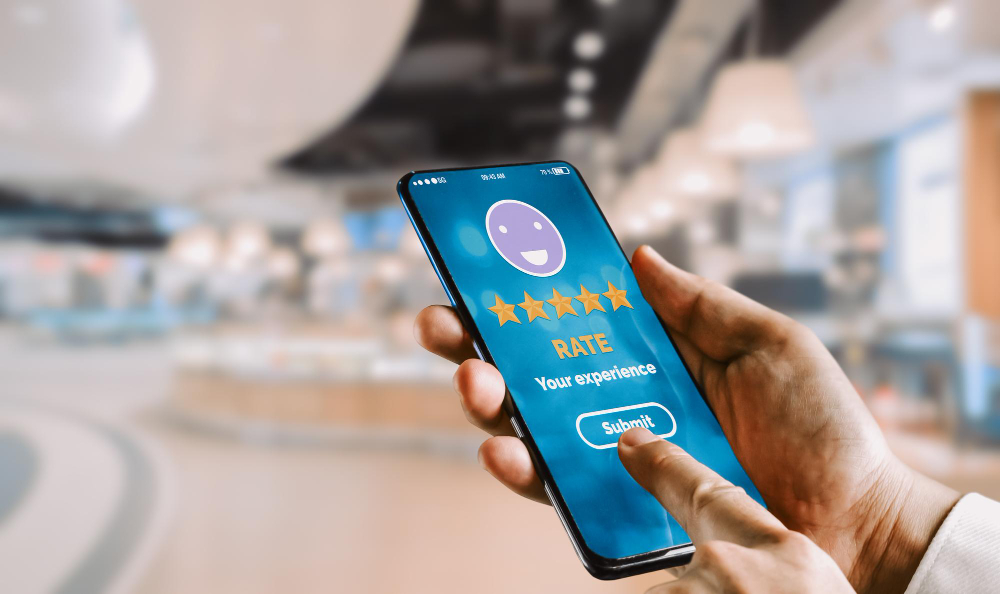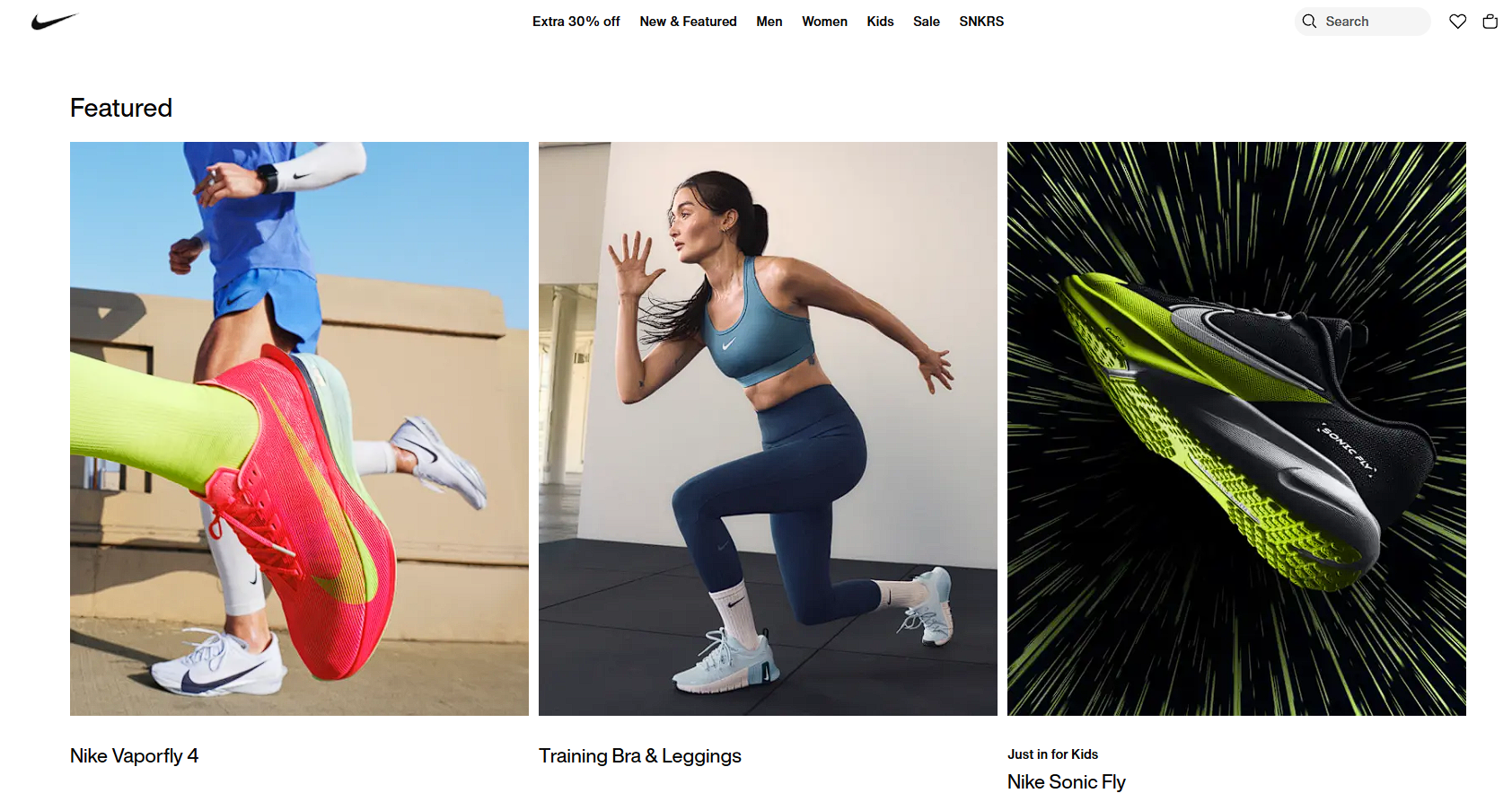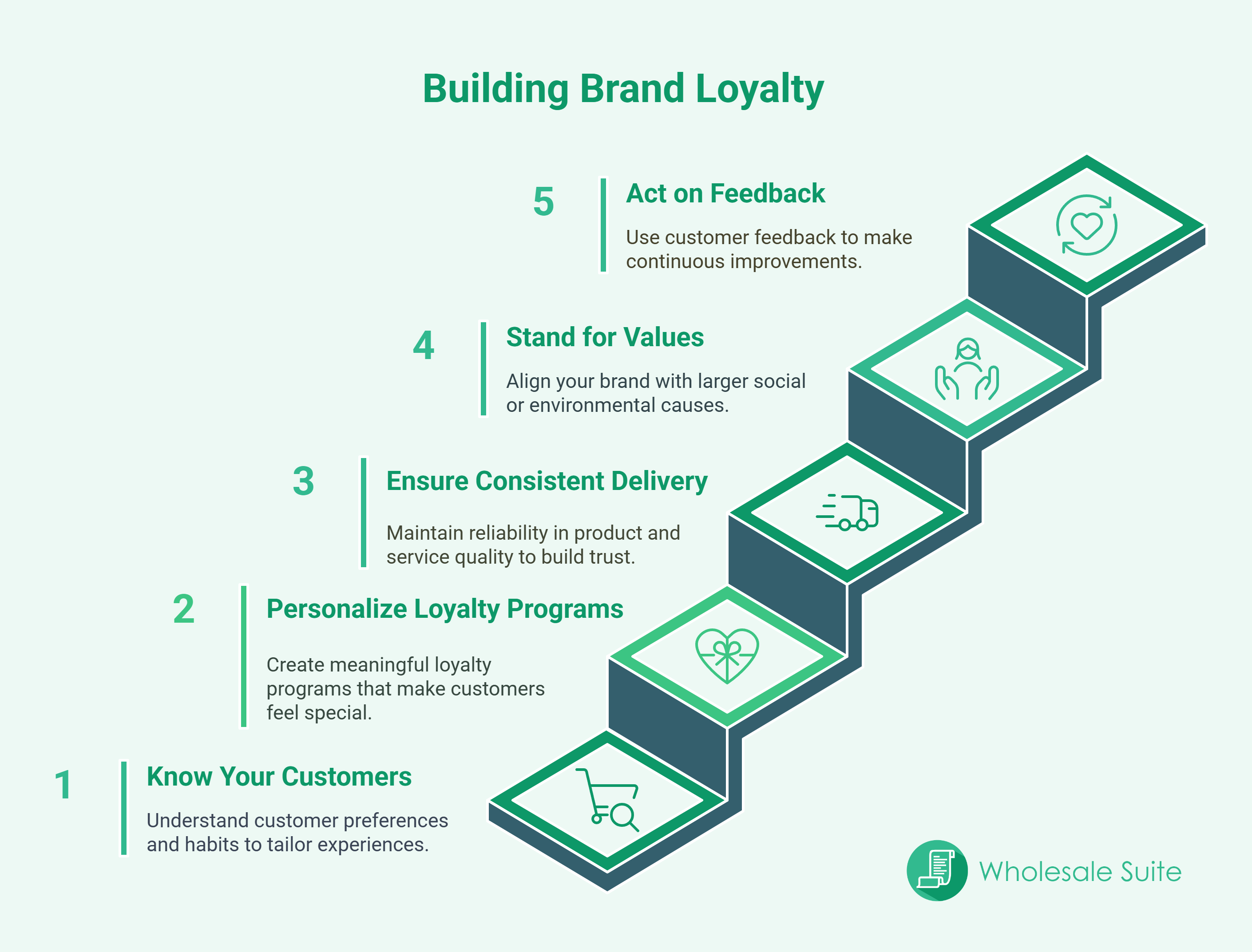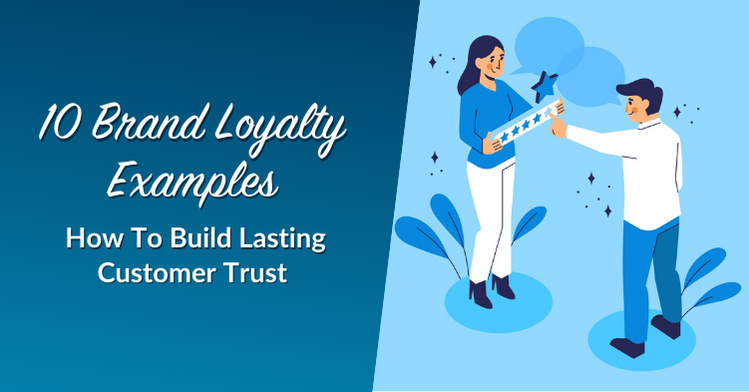
When you think about your favorite brands, there’s probably a reason why you keep going back to them. Maybe it’s how they treat you, the little rewards they give, or how their products feel like they were made just for you. These are all signs of strong brand loyalty. In this article, we’ll look at 10 brand loyalty examples showing how top companies build customer trust. We’ll also discuss what you can learn from them and how to build brand loyalty in your business.
Let’s get down to it!
Start With Trust: Why Brand Loyalty Still Matters Today
These days, people don’t just buy from brands; they stick with them. A loyal customer will keep buying from the same brand even when cheaper or faster options exist. In fact, a survey found that 36.5% of shoppers would pay more just to stay with a brand they trust.
So, what does brand loyalty really mean?
Brand loyalty happens when a customer chooses to buy from the same brand again and again. It’s not just because the product works. It’s because the customer feels like they know the brand. They trust it. They feel that the brand understands them. That kind of trust doesn’t happen by accident. It’s built over time through good experiences, friendly customer service, and reliable products.
According to HubSpot, 93% of customers will likely return to a brand with excellent customer service.
When customers feel valued, they come back and bring in friends and family. Some even post about their favorite brands on social media without being paid. This kind of support is called customer advocacy, and it’s one of the strongest signs of brand loyalty.
The best part? Brand loyalty isn’t only for big-time businesses. Small businesses can build brand loyalty, too. If your store offers great service, fair pricing, and a loyalty program that rewards people, your customers will remember you. And they’ll keep coming back.
Brand Loyalty Examples From Real Brands
Let’s now look at how real companies build brand loyalty. These brand loyalty examples prove that strong customer trust can turn a one-time buyer into someone who keeps returning for years. Each brand below does something special to build brand loyalty and increase customer retention.
1. Creating an ecosystem that feels personal – Apple
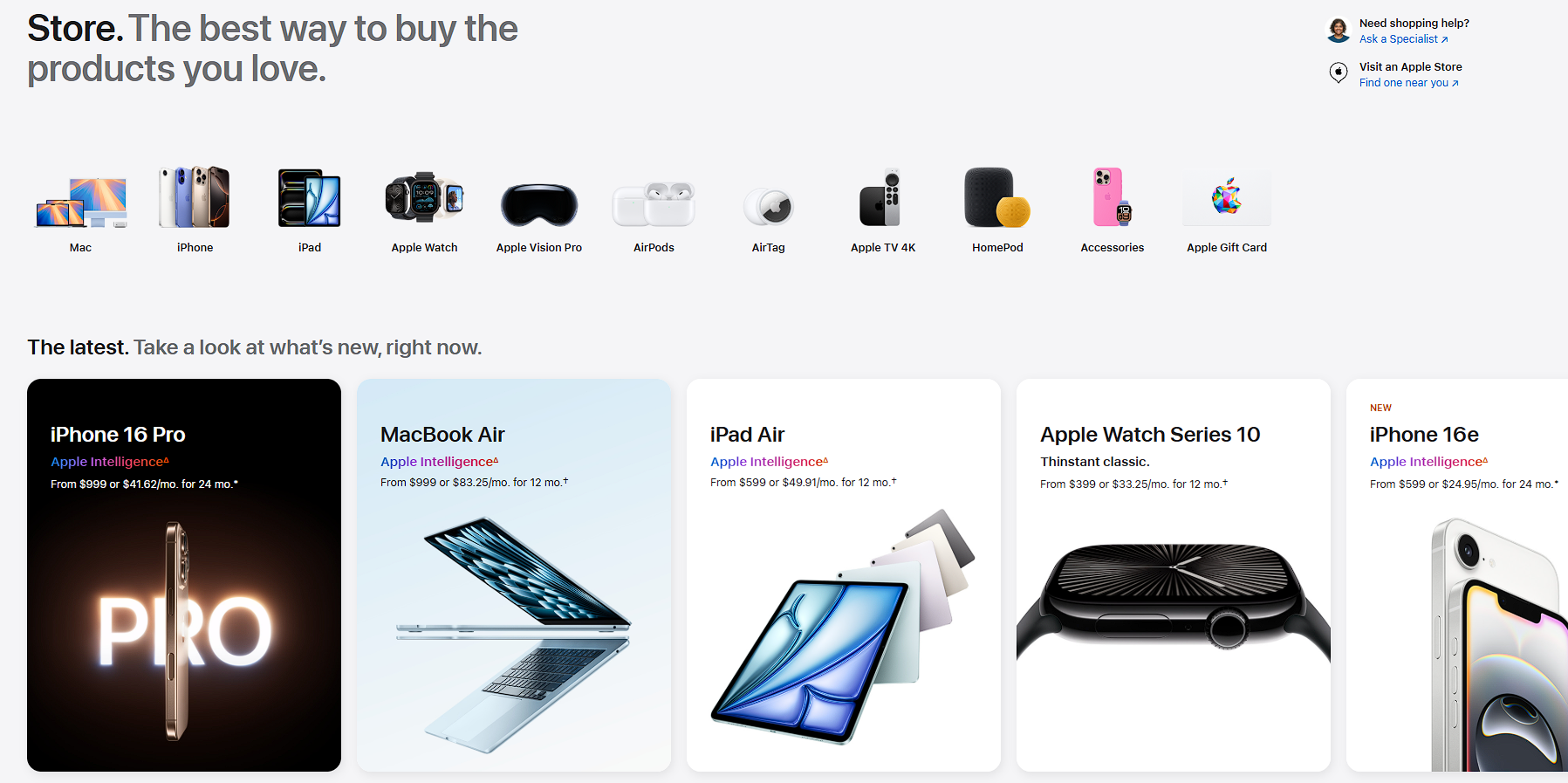
Apple is one of the best brand loyalty examples in the world. When someone buys an iPhone, they usually don’t stop there. They also buy a MacBook, an Apple Watch, and AirPods. Why? Because all these products are made to work together. You can answer phone calls from your laptop. You can move files between devices easily. It feels smooth and straightforward. This kind of experience helps people stay.
Apple’s design is also clean and easy to use. Even young kids and older adults find it simple. On top of that, Apple has excellent customer service. If your device breaks or needs fixing, the Apple Store is ready to help. People feel safe buying again because they know they’ll be cared for. This strong brand builds trust through great service and smart design.
2. Turning coffee into a community – Starbucks

Starbucks is more than just a place to grab coffee. For many people, it feels like a second home. Their shops have soft lighting, comfy seats, and friendly staff. Some people even go there to study or work. But Starbucks didn’t stop there.
They created the Starbucks Rewards app. This loyalty program gives you stars for every drink or snack you buy. You can trade those stars for free items. It’s simple, and it works. Customers feel appreciated every time they use the app. As a result, Starbucks gets more repeat purchases and builds customer loyalty day by day.
3. Inspiring identity and movement – Nike
Nike is one of the great brand loyalty examples because it sells more than shoes. It sells a feeling. Nike tells stories about hard work, confidence, and pushing past limits. These messages connect with people emotionally. Customers feel like they belong to something extraordinary when they wear Nike.
Nike’s loyalty program gives members access to new products, birthday rewards, and early workout plans. People love the perks, but they also love how the brand makes them feel. This deep connection leads to a long customer lifetime value.
4. Rewarding every swipe and purchase – Sephora
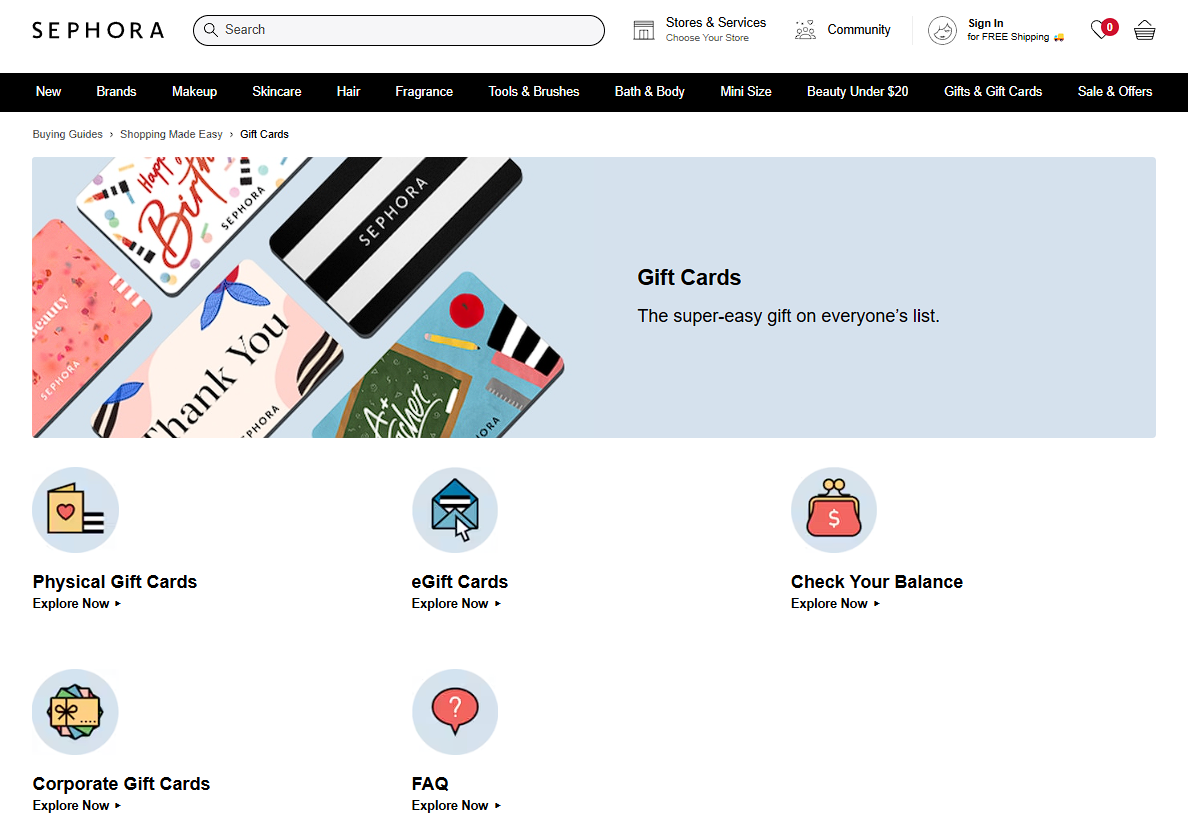
Sephora built one of the most popular loyalty programs in the beauty world. Every time you shop, you earn points. These points can be traded for small gifts, full-sized products, or special discounts. The more you spend, the more perks you unlock.
What makes it even better is its customer service. In stores, its staff is trained to help you find what works for your skin or style. Its chat support is very responsive online. This kind of care builds customer loyalty because people feel they’re being looked after. Sephora turns buying makeup into something exciting and personal.
5. Loyalty through convenience and value – Amazon Prime
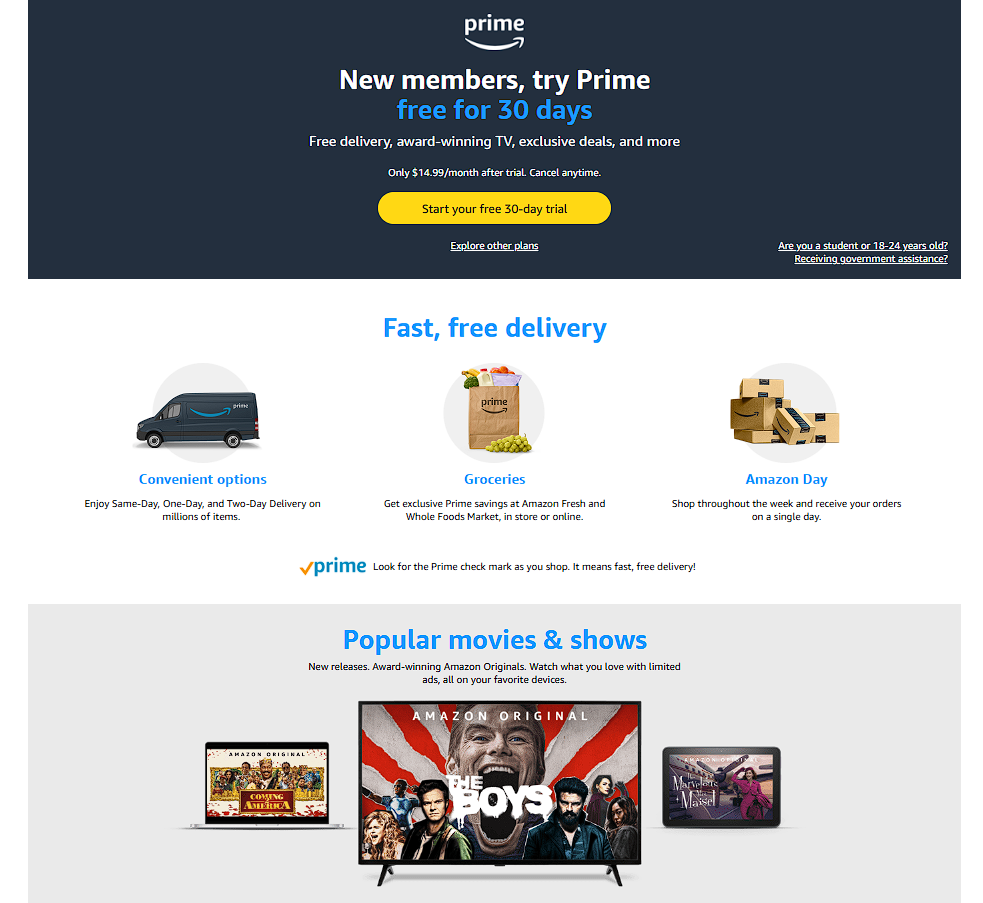
Amazon Prime is a good example of a loyalty program that works in many ways. For a monthly or yearly fee, you get fast shipping, free movies and shows, and special discounts. For busy families or shoppers, it feels worth it.
But Amazon doesn’t stop at fast delivery. It gives helpful reminders, product suggestions, and easy returns. People know they can count on Amazon to deliver. This trust keeps customer retention high. People who join Prime usually stay for a long time, and they become repeat buyers because the value keeps showing up.
6. Listening to fans, building with them – Lego
Lego is one of the most loved toy brands in the world. But it didn’t just get there by selling blocks. Lego listens to its customers. With LEGO Ideas, fans can submit their own set designs. If enough people vote, those designs can become real sets sold in stores.
This kind of customer engagement makes fans feel important. They feel like part of the brand. When customers are included, they care more. And when they care more, they stay longer. Lego shows that listening to fans is a powerful way to build brand loyalty.
7. Personalized recommendations that keep you watching – Netflix
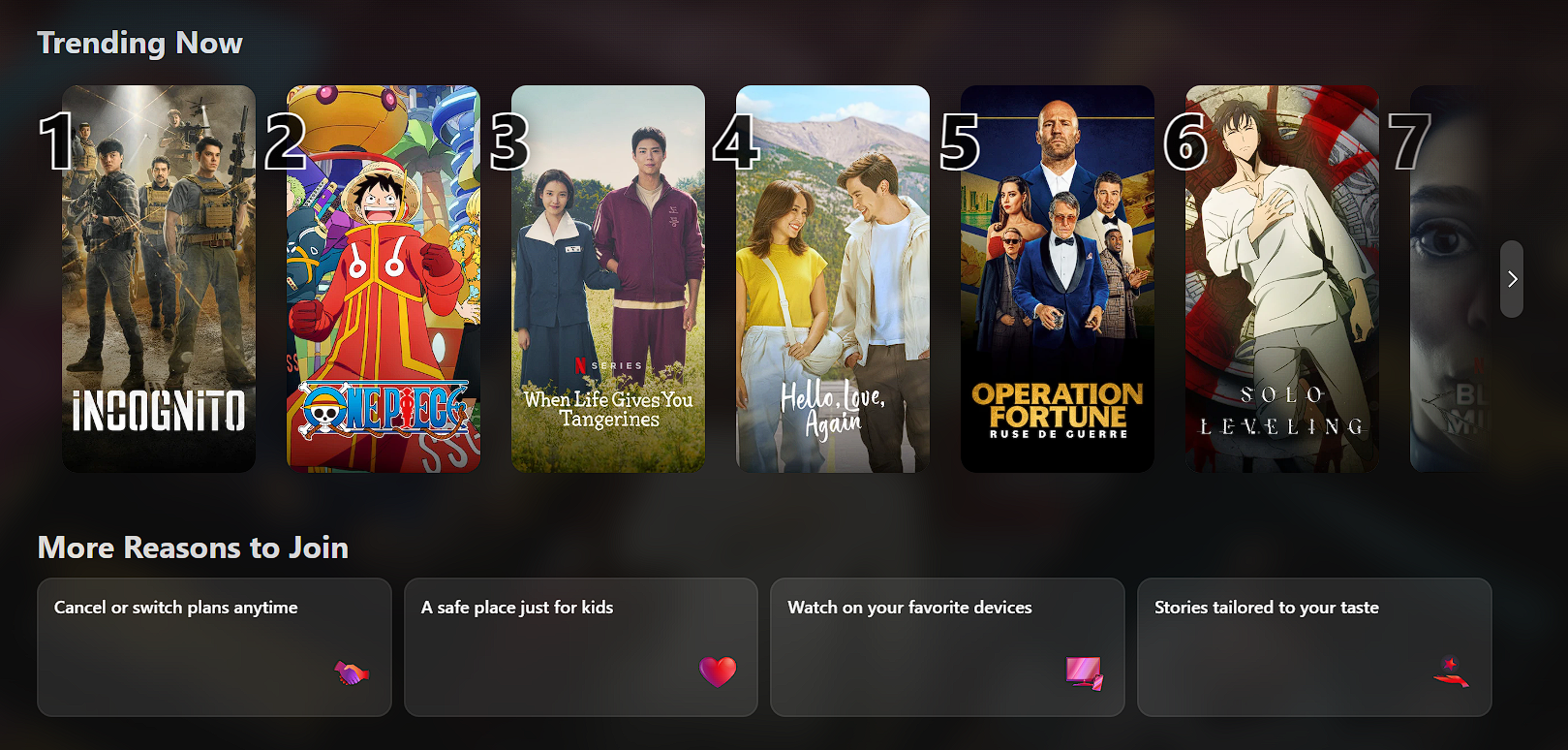
Netflix makes it easy for people to find shows and movies they like. The app learns what you enjoy and recommends something similar. This saves people time and keeps them watching.
Netflix also makes it easy to pause and continue shows on different devices, which is helpful for busy families or people on the go. These small touches lead to better customer service. People stay subscribed because Netflix understands their habits. This is one of the strong brand loyalty examples that shows how knowing your users can lead to high customer retention.
8. Quirky consistency that customers trust – Trader Joe’s
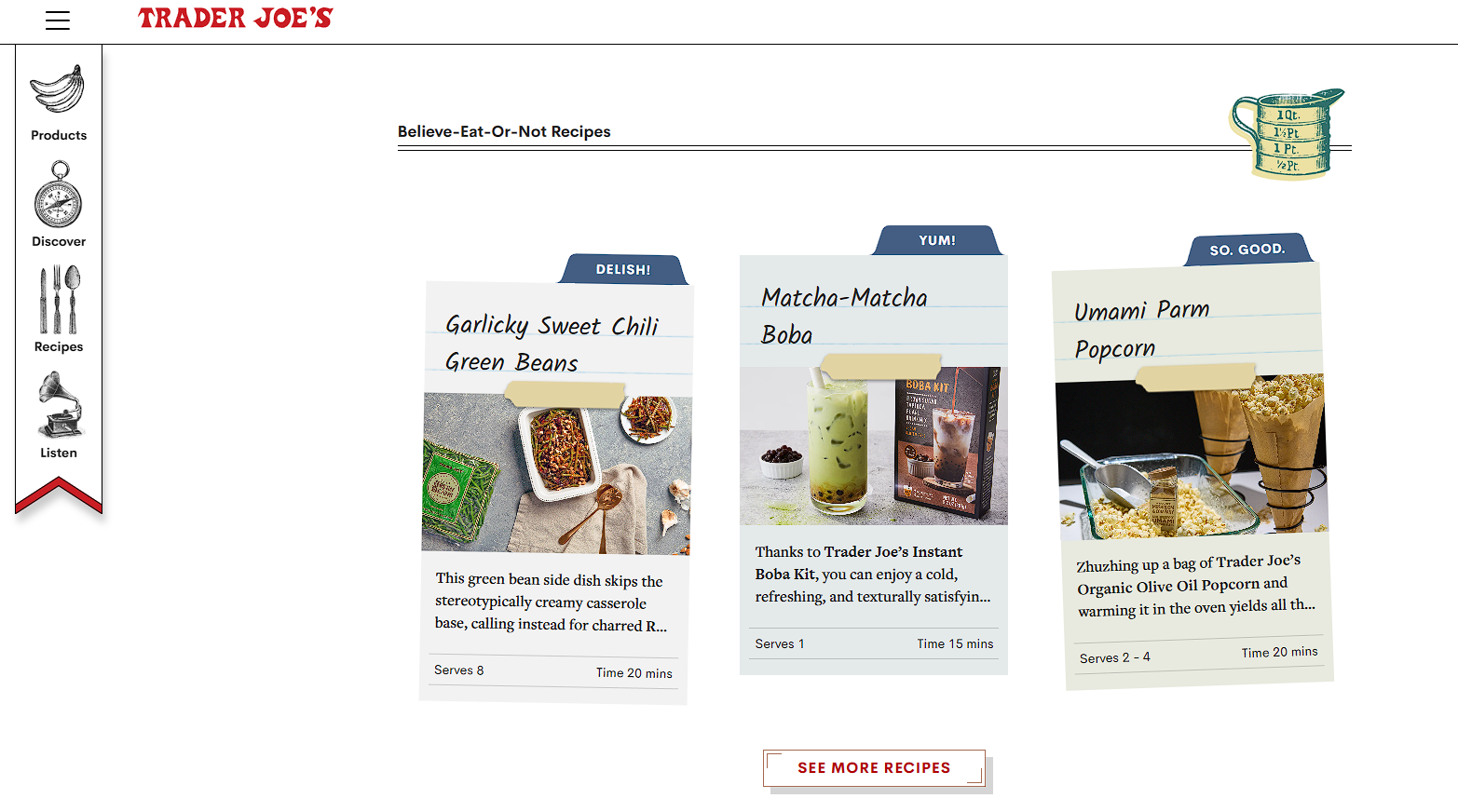
Trader Joe’s is a grocery store where people enjoy shopping. The store has friendly workers, fun packaging, and products you can’t find anywhere else. Trader Joe’s keeps a loyal customer base even without big ads or sales.
Why? Because it’s consistent. You know what to expect: fair prices, quick checkouts, and helpful staff. This kind of trust builds repeat purchases.
9. Nostalgia and emotional storytelling – Coca-Cola

Coca-Cola is one of the oldest brand loyalty examples on this list. They’ve stayed popular for decades. A big reason is the emotional feeling they tie to their drinks. Their ads show family dinners, holidays, and happy memories. These stories make people feel something warm inside.
They also do fun campaigns like putting names on bottles. People love finding their name or sharing bottles with friends. These small touches build brand loyalty by making the product feel personal. Coca-Cola proves that emotional marketing can lead to long-term customer loyalty.
10. Loyalty rooted in shared values and activism – Patagonia
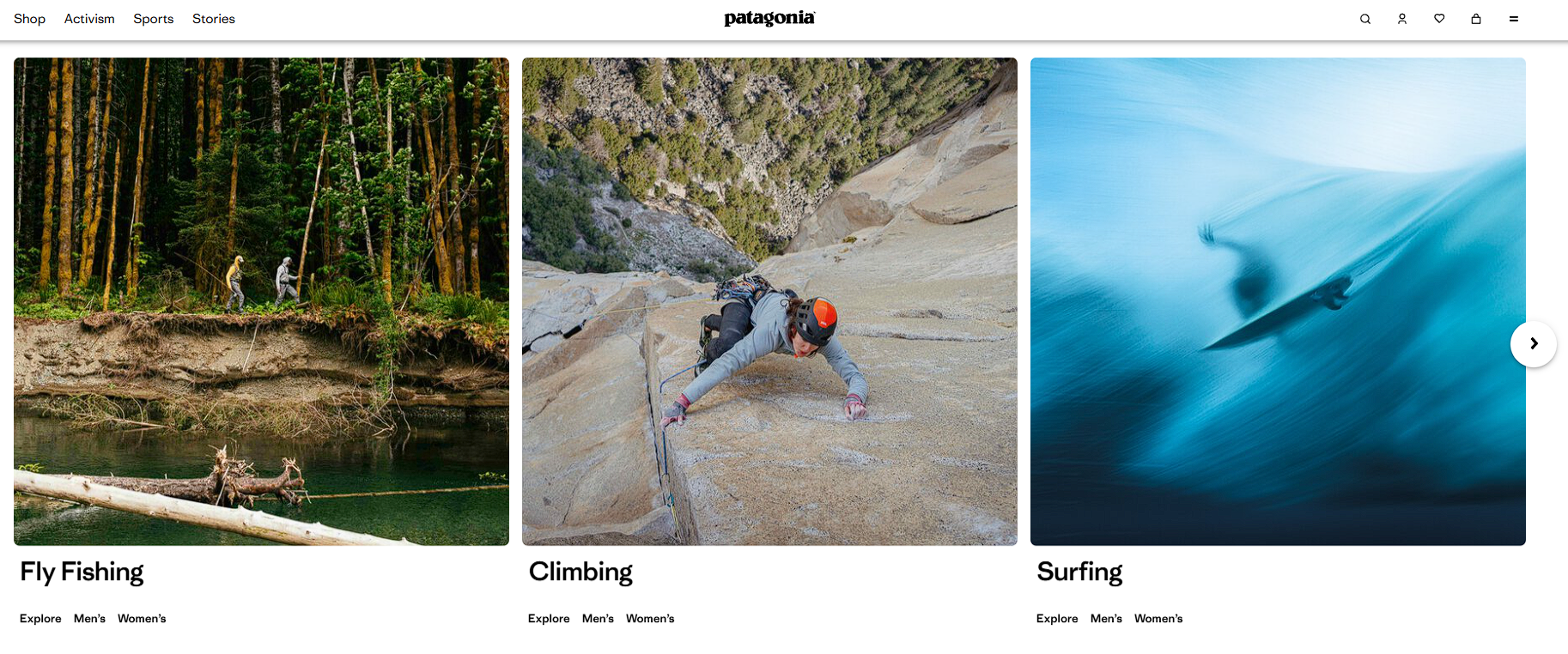
Patagonia is not just about clothes. It’s about values. They care deeply about the environment and talk about it openly. They even tell customers to buy less and repair old items instead of new ones.
This honesty makes people trust them. Customers who care about the planet support Patagonia for the products and what the brand believes in. This deep connection creates loyal customers who stay with the brand for years. It’s one of the strongest examples of building a brand through shared beliefs.
What These Brand Loyalty Examples Teach Us
These brand loyalty examples show us that there’s no single way to build brand loyalty. But there are clear lessons that every business, big or small, can learn from them. Here’s what they all have in common:
Trust comes from consistency
When people know what to expect, they trust the brand more. That’s what Trader Joe’s and Apple both do well. The quality stays the same. The experience is familiar. Customers return because they know things won’t change too much. This is how you build brand loyalty through trust and comfort.
Rewards and value keep people around
Programs like Starbucks Rewards and Amazon Prime give something back. These rewards feel like a thank-you to the customer. That helps people feel valued.
Emotional bonds beat discounts
Some brands build loyalty with feelings, not price cuts. Nike connects with people by encouraging them. Coca-Cola uses happy memories. These emotional messages stick with customers more than short-term sales do.
Community builds loyalty faster
Customers love to feel included. This is why brands like Lego and Sephora win. They invite customers to participate, whether voting on a new product or earning a beauty reward.
Listening to customers pays off
Lego and Patagonia are great at listening. They hear what people want and take action. This makes customers feel important.
How To Build Brand Loyalty In Your Own Business
Now that you’ve seen some of the most well-known brand loyalty examples, you might wonder how to apply these lessons to your store. The good news is, building customer loyalty doesn’t require a huge team or a big budget. It just takes time, care, and the right approach. Below are simple but powerful brand loyalty examples to build your business, even if you’re just starting out.
1. Know your customers better than they know themselves
Every strong brand starts by paying close attention to its customers. You don’t need expensive tools to do this. You just need to observe and ask the right questions.
Start by looking at what people buy most often. Are there certain items they return to over and over? Do they only shop during sales? Do they prefer certain colors, sizes, or styles? These small details tell you a lot about what they care about.
You can also send out short surveys or ask for feedback at the end of a purchase. A simple “Was everything okay with your order today?” can yield valuable insights.
When you learn what they love, you can give them more of it. If your best customers keep buying the same product every month, you could suggest a subscription option. You could send them a Friday-only deal if they often shop on Fridays.
The more you understand your customers’ patterns, the easier it becomes to build brand loyalty. When shoppers feel like a brand gets them without asking too much, they are likelier to stick around for the long term.
2. Create a loyalty program that feels personal
One of the best ways to encourage repeat purchases is by offering rewards that feel meaningful. A loyalty program doesn’t have to be fancy to work. What matters most is that it feels like it was made for the customer, not just for the business.
You could give customers points every time they buy something. Later, they can trade those points for discounts or small gifts. Or you could offer a special reward for people who refer their friends. These small “thank you” moments help customers feel like their support matters.
If you use WooCommerce, you can build a flexible and rewarding loyalty program using tools like Advanced Coupons. This plugin helps you create rules based on spending habits, product types, or even customer location. You can make your loyalty program match your store’s personality and give your customers deals that actually feel useful.
When paired with Wholesale Suite, this becomes even more powerful. Wholesale Suite lets you treat your wholesale customers differently by offering special pricing, order forms, and access rules just for them. It’s a great way to create loyalty across retail and wholesale customers, without extra work or confusion.
The more personal your loyalty program feels, the more likely your customers will return. And when they keep returning, that builds strong brand loyalty.
You may also read: How To Reward Loyal Customers: 7 Proven Strategies.
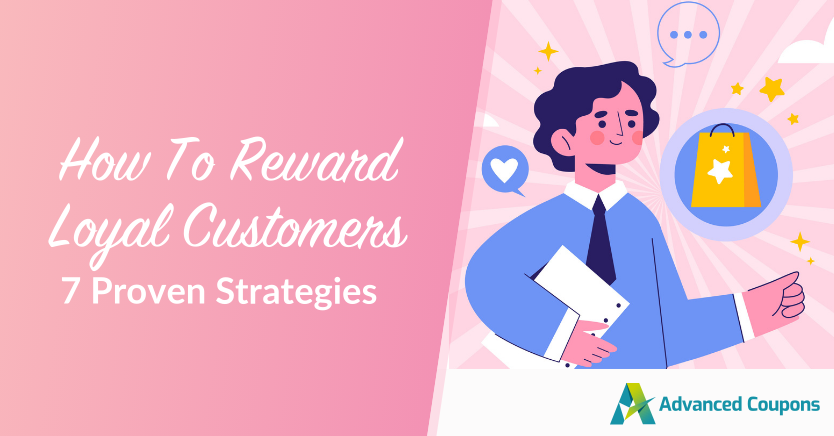
3. Deliver consistently (in product, service, and experience)
One of the biggest reasons customers leave is because something goes wrong. Maybe the product quality changed. Maybe their order arrived late. Or maybe a staff member wasn’t helpful. These small problems can damage trust very quickly.
That’s why consistency matters so much. Your customers want to know that they’ll get the same great experience every time they visit your store.
Make sure your products meet the same level of quality with every order. Double-check that your website works well, your order system is simple, and your emails are easy to understand. If someone reaches out for help, reply with kindness and speed. Even if you can’t fix the problem immediately, being polite and honest makes a big difference.
Customers remember how they’re treated. If they get the same care every time, they’ll return without thinking twice. That consistency leads to customer retention and a stronger brand reputation over time.
4. Stand for something bigger than profit
In today’s world, customers want more than just a good deal. Many shoppers prefer brands that care about the same things they do. That might mean protecting the environment, helping local communities, or standing up for fairness.
You don’t have to make big changes to show your values. Even something small can matter. Maybe you donate part of your sales once a month, support a local school, or use recycled packaging. Share these efforts with your customers. Tell them why it matters to you and how it makes a difference.
Patagonia is one of the strong brand loyalty examples because it is clear about its beliefs. People trust it not only because of its products but also because of its message. It doesn’t try to please everyone. It just stays true to its mission, and loyal customers respect that.
You can do the same. When customers feel like they’re part of something meaningful, they’re more likely to support your business repeatedly.
5. Turn feedback into action
Feedback is one of the most helpful things your customers can give you. But listening is only the first step. You also have to show them that you care about what they said.
If a customer tells you your shipping took too long, thank them. Then check if there’s a way to make it faster next time. If someone suggests a new color or size for your product, take it seriously. You don’t have to make every change, but even small improvements can help.
When you make a change based on feedback, tell your customers about it. For example, you can say, “Thanks to your suggestions, we’ve made our checkout page easier.” That simple update shows that their voice matters.
Turning feedback into action shows customers that your brand is listening. It builds trust and respect. Most of all, it creates customer loyalty because people feel like their opinions made a real impact.
You may also read: Brand Loyalty In Marketing (What You Need To Know).
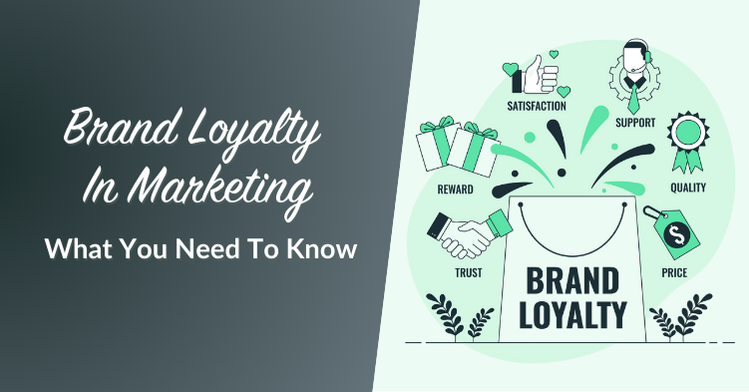
Frequently Asked Questions
What is the meaning of brand loyalty?
Brand loyalty means a customer keeps choosing the same brand repeatedly, even when many other options exist. They stay with the brand because they trust it, like how they are treated, and enjoy the products or services.
When someone is loyal to a brand, they don’t just make one purchase and forget about it. They come back again. They also talk about the brand with friends, leave good reviews, and sometimes even wear the brand’s logo or post about it online. That’s because they feel connected to the brand.
How do you determine brand loyalty?
You can determine whether your customers are loyal by observing their behavior over time. One of the easiest ways to measure brand loyalty is by checking repeat purchases. If people return to buy from your store again, that’s a good sign of loyalty to your brand.
Another way to measure brand loyalty is to examine your loyalty program data. Are people earning and using points? Are they returning to your store after receiving a reward? That’s a sign that your program works and that people feel valued.
What is an example of loyalty in modern day?
A great modern-day example of brand loyalty is Amazon Prime. Millions of people pay for a yearly or monthly membership for fast shipping, streaming services, and special deals. Even if another website sells the same product for a lower price, Prime members still choose Amazon.
Why? Because they know what to expect. Amazon delivers its packages on time, handles returns easily, and remembers what they like. It saves them time and gives them peace of mind.
That’s what brand loyalty looks like. Customers stay with Amazon not just because of the products, but because the overall experience is simple, reliable, and helpful. They trust the brand to take care of them.
Takeaways
After seeing all these brand loyalty examples, one thing is clear: loyalty does not happen by accident. It takes time, care, and effort. But it is possible for every business. When you build brand loyalty, you’re not just making money. You’re creating long-term relationships that grow over time.
From Apple’s simple design to Patagonia’s strong values, each example shows a different way to build trust. What they all share is a focus on the customer. They listen, reward, and deliver what they promise.
In this article, we talked about brand loyalty examples and how to build brand loyalty in your own business:
- Why brand loyalty matters
- Brand loyalty examples
- Brand loyalty lessons
- How to build your own brand loyalty
At Wholesale Suite, we’ve seen how the right tools and strategies make all the difference. When you understand your customers, reward them, and treat them well, you create a strong brand that people will stick with. So today, think about one small change you can make to help your customers feel more cared for. That’s how trust starts—and how loyalty begins.
Do you have questions about brand loyalty examples? How about creating loyalty programs? Let us know in the comments!


